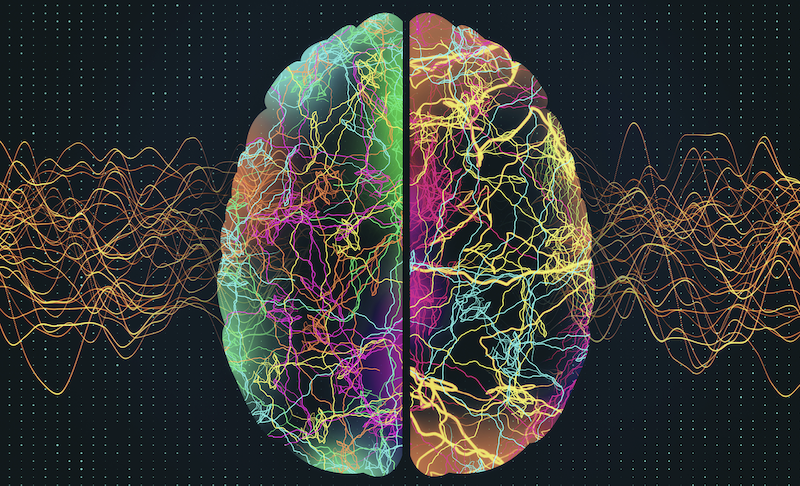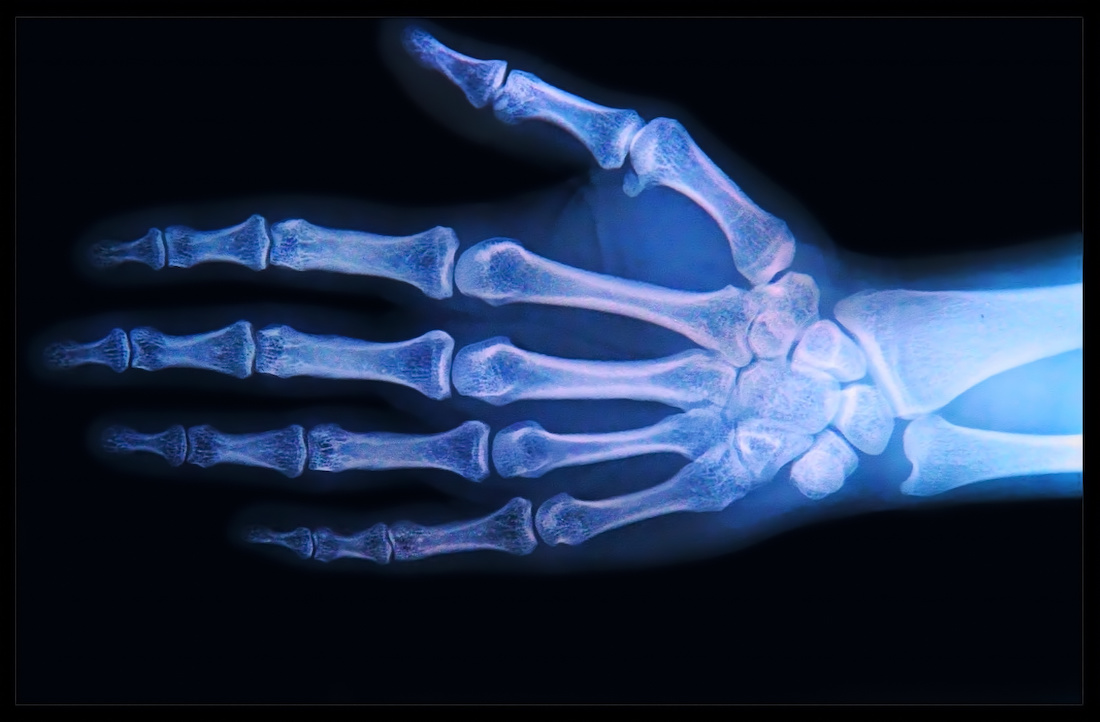History of ultrasound: From bats to frogs to Nazis to modern-day brain stimulation

- Sound can have a powerful effect on biological systems, even when it is outside the range of hearing.
- Fish being killed by sonar devices was the first evidence that ultrasound can have a profound effect on animals.
- As scientists discovered therapeutic wave frequencies and durations, it opened the door to stimulating specific regions of the brain.
Sounds can have powerful effects. Music can decrease blood pressure, alter emotions, and even treat diseases such as epilepsy. Even more, sounds can have therapeutic effects, even if we cannot hear them. Over the past century, scientists have explored the possibility of using ultrasound (sound outside the range of human hearing) for everything from brain stimulation to cellular regeneration. This technique, called “ultrasonic biomodulation,” has shown potential in treating a variety of psychiatric diseases, including OCD and addiction.
Like most scientific discoveries, a series of interesting events occurred before scientists discovered that they could use ultrasound to stimulate specific regions of the brain. The first involved a Catholic priest and an owl flying into a wall.
Why bats with no eyes can still navigate
By the 1790s, Lazzaro Spallanzani — an Italian biologist, physiologist, and Catholic priest — had discovered digestion to be a chemical process, showed fertilization requires both sperm and egg, and discredited spontaneous generation (the theory that living organisms spawn from nonliving matter). (In 1859, Louis Pasteur put the final nail into that theory.) But one mystery eluded him: Barn owls, which are nighttime hunters, crash into walls and other obstacles when in a completely dark room. However, a bat flies about the same room perfectly fine.
At first, Spallanzani suspected bats possessed unique night vision abilities. However, bats could still navigate when he removed their eyes. He concluded that bats must navigate using other senses, but he couldn’t imagine which senses enabled a “blinded” bat to behave as if it could see. After learning of Spallanzani’s bat problem, his contemporary Louis Jurine, a Swiss physician, proposed that bats navigate by sound. It was a ridiculous idea at the time, but he showed that bat flight was disrupted when he stuffed their ears with wax.
Spallanzani confirmed Jurine’s findings, but neither ever identified how bats navigate by sound. However, their work was the first to suggest the existence of sound outside the range of human hearing: ultrasound.
Putting the sound in ultrasound
Over the next century, more scientists began researching ultrasound, but it was a long road to using ultrasound for brain stimulation. Sir Francis Galton — creator of the statistical concept of “correlation” and founder of eugenics — was the first to discover a practical use for ultrasound: a dog whistle. Allegedly, he would walk through a zoo, blasting the whistle and taking note of the animals that reacted. However, most scientists focused on the properties of ultrasound at the theoretical level: What material can ultrasonic waves pass through? Does it cause vibrations? How far can it travel?
Overall, ultrasound remained a relatively niche field of study. The same year Galton invented his dog whistle, Pierre Curie (French physicist and husband of Madame Marie Curie) found that a piece of quartz would vibrate and emit ultrasound when placed in an electric field. This discovery finally allowed scientists to create ultrasonic waves at specific frequencies, but still, no one had any idea what that technology could be used for — that is, until the sinking of an infamous ship and a particularly heated disagreement among global leaders.
Killing frogs is a biologist’s job
By 1917, two important events had created a particular interest in detecting submerged objects: the Titanic and the First World War. Fueled by this interest (and a disdain for fascists), Paul Langevin began to explore the possibility of using Pierre Curie’s ultrasound-emitting quartz to detect German U-boats.
Langevin was a passionate and interesting physicist. He founded the Watchfulness Committee of Antifascist Intellectuals to thwart the rise of fascism in pre-WWI France. After Pierre Curie died, he had a romantic tryst with Madame Marie Curie. And, he invented a sonar (sound navigation and ranging) device, which he demonstrated to Robert Wood, an American physicist visiting Langevin. During the demonstration, Wood noticed small fish were killed if they swam into the beam of sound waves. Naturally, Wood stuck his hand in the ultrasonic beam. He later described the experience: an “almost [intolerable] pain was felt, which gave one the impression that the bones were being heated.”
In 1927, Wood recalled the experience to a colleague, and the two scientists began to investigate the effect sound waves have on biological systems, specifically, frogs. He found that, when blasted with high frequency ultrasonic waves, frogs die much like fish. Wood suggested the cause of death to be internal heating; however, he was skeptical. In an attempt to prevent temperature increases, he dropped ice into the water around the frogs. The frogs still died. Admitting that the research might be better conducted by a biologist, Wood handed off the study to Edmund Harvey, an American zoologist.
The birth of ultrasonic biomodulation
Harvey suspected that ultrasound caused intense vibrations, which disrupted the frog tissue’s ability to generate and transmit electrochemical impulses. The two most important tissues that rely on electrochemical impulses are the heart and the nervous system. So, instead of using whole organisms, he focused the ultrasonic waves on a frog’s heart and a nerve in the frog’s leg. Stimulated by intense ultrasound, the heart twitched, the leg kicked, and ultrasonic biomodulation was born — and it quickly died.
Over the next several decades, “physicians” claimed that they could modify biological function via ultrasonic therapy. Essentially, ultrasonic biomodulation became snake oil — “treating” everything from eczema to cancer to impotence. (Ironically, recent studies have shown ultrasound does have therapeutic potential for each of these disorders.)
Failure to live up to the hype wasn’t the only thing that silenced the ultrasonic biomodulation boom. There were also the Nazis. Just a decade after Harvey’s discovery, World War II began. Among other things, this prevented scientists from communicating with colleagues in other nations.
However, after WWII, there was a surge of publications on the therapeutic uses of ultrasound, many of them in German. While these publications did not explicitly describe how these discoveries were made, it is clear that Nazi scientists put considerable research into testing the effect of various ultrasonic frequencies and their durations on the human body — from disrupting mental states (such as inducing anxiety) to disrupting physical states (such as paralysis of movement).
These findings renewed interest in ultrasonic biomodulation, as there was desperate need for new methods of brain stimulation. By the end of the 20th century, researchers identified methods of using ultrasound to diagnose and treat many disorders (including cancer, inflammation, and even broken bones).
Ultrasound and brain stimulation
Over this same period, neuroscientists made significant advances in mapping the brain, determining which regions are linked to specific behaviors. As ultrasound became better understood and the therapies were shown to cause no permanent damage, scientists began exploring the possibility of modifying behavior by targeting specific regions of the brain with ultrasound. Recently, scientists have shown that ultrasonic brain stimulation can be used to modulate animal behaviors, including improving mood and reducing the ability to make good decisions.
While it is a new frontier of research, ultrasonic biomodulation is showing great therapeutic potential, particularly in patients experiencing mental health issues. Currently, researchers are investigating the use of this technology to treat obsessive-compulsive disorder (OCD), major depression, and addiction in clinical trials.





